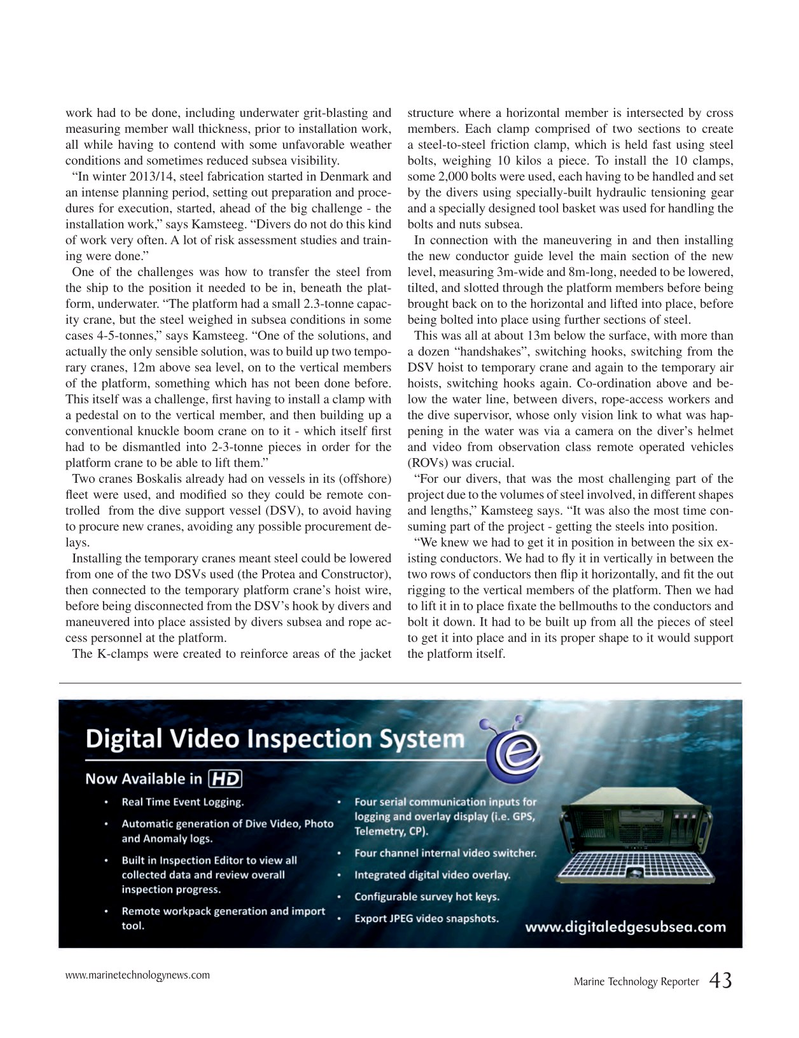
Page 43: of Marine Technology Magazine (September 2015)
Ocean Observation: Gliders, Buoys & Sub-Surface Networks
Read this page in Pdf, Flash or Html5 edition of September 2015 Marine Technology Magazine
work had to be done, including underwater grit-blasting and structure where a horizontal member is intersected by cross measuring member wall thickness, prior to installation work, members. Each clamp comprised of two sections to create all while having to contend with some unfavorable weather a steel-to-steel friction clamp, which is held fast using steel conditions and sometimes reduced subsea visibility. bolts, weighing 10 kilos a piece. To install the 10 clamps, “In winter 2013/14, steel fabrication started in Denmark and some 2,000 bolts were used, each having to be handled and set an intense planning period, setting out preparation and proce- by the divers using specially-built hydraulic tensioning gear dures for execution, started, ahead of the big challenge - the and a specially designed tool basket was used for handling the installation work,” says Kamsteeg. “Divers do not do this kind bolts and nuts subsea. of work very often. A lot of risk assessment studies and train- In connection with the maneuvering in and then installing ing were done.” the new conductor guide level the main section of the new
One of the challenges was how to transfer the steel from level, measuring 3m-wide and 8m-long, needed to be lowered, the ship to the position it needed to be in, beneath the plat- tilted, and slotted through the platform members before being form, underwater. “The platform had a small 2.3-tonne capac- brought back on to the horizontal and lifted into place, before ity crane, but the steel weighed in subsea conditions in some being bolted into place using further sections of steel. cases 4-5-tonnes,” says Kamsteeg. “One of the solutions, and This was all at about 13m below the surface, with more than actually the only sensible solution, was to build up two tempo- a dozen “handshakes”, switching hooks, switching from the rary cranes, 12m above sea level, on to the vertical members DSV hoist to temporary crane and again to the temporary air of the platform, something which has not been done before. hoists, switching hooks again. Co-ordination above and be-
This itself was a challenge,

 42
42

 44
44
